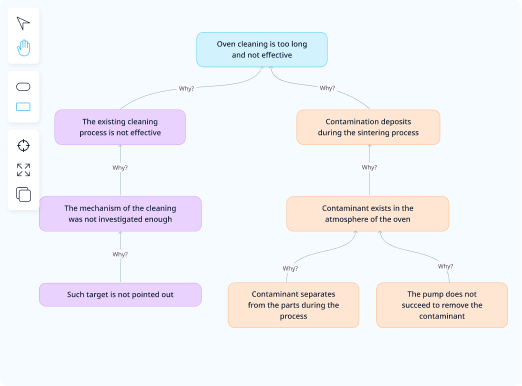creative tool

The Cause and effect chain is a reasoning system that shows how one event leads to another. It involves pinpointing the cause that results in an effect. This connection is essential, for understanding how different events are linked together.
Grasping cause and effect is vital for thinking and rationality. It allows individuals to assess situations make forecasts and solve problems by comprehending how events impact each other. This type of reasoning plays a role in fields requiring thinking and decision making.
A cause-effect chain (CEC) tree diagram is a visual tool that helps us logically organize possible causes for a specific problem or effect. It displays these causes in increasing detail and suggests causal and effect relationships among theories. Of course, there are several popular types of these tools.
The Chain of Cause and Effect (CEC) analysis is a valuable thinking tool for problem-solvers and innovators. It helps us think, organize, and focus our thoughts. While the traditional perception is that it helps us find a root cause, there are other benefits to using the CEC tool. Here, we summarize how you and your team can benefit from it:
The Cause and Effect Chain (CEC) tool is useful in various situations. Here are a few examples:
Furthermore, you can explore more creative applications of the cause-and-effect tree diagram for different scenarios.

To construct a cause and effect chain one must begin by identifying the causes.
This process involves selecting a question that has implications, in areas such as the economy, environment, society and politics. It is important for students to grasp the distinction between consequences and factors. The first step is to brainstorm outcomes associated with the question and note them next to the question with arrows indicating their direct link.
After identifying consequences the next stage is to delve into outcomes stemming from them. For example an increase in electricity demand could result in expenses and the necessity for power stations as secondary effects. These can further lead to repercussions like improvements to the power grid or increased emissions if fossil fuels are utilized. Each level of consequence should be linked by arrows to show their interconnections.
Graphic organizers, particularly cause and effect diagrams, are invaluable in clarifying and structuring the relationships between causes and effects. These tools help in visually representing the connections, making complex situations easier to understand and analyze. A cause-effect diagram starts with the effect and branches out into various causes identified through brainstorming or logical analysis, ensuring each causal chain is logically valid. This systematic approach aids in maintaining focus and encourages innovative thinking while exploring the cause and effect chain.
Check our CEC documentation here
the utilization of tools like the CEC (Cause and effect chain) analysis extends beyond mere problem identification. It empowers individuals and teams to gain a deeper grasp of systemic operations, identifies the interdependencies within these systems, and organizes thoughts to focus on addressing issues systematically. The significance of such analytical tools in predicting outcomes, effecting change, and achieving goals underscores the intersection of critical thinking and strategic decision-making.